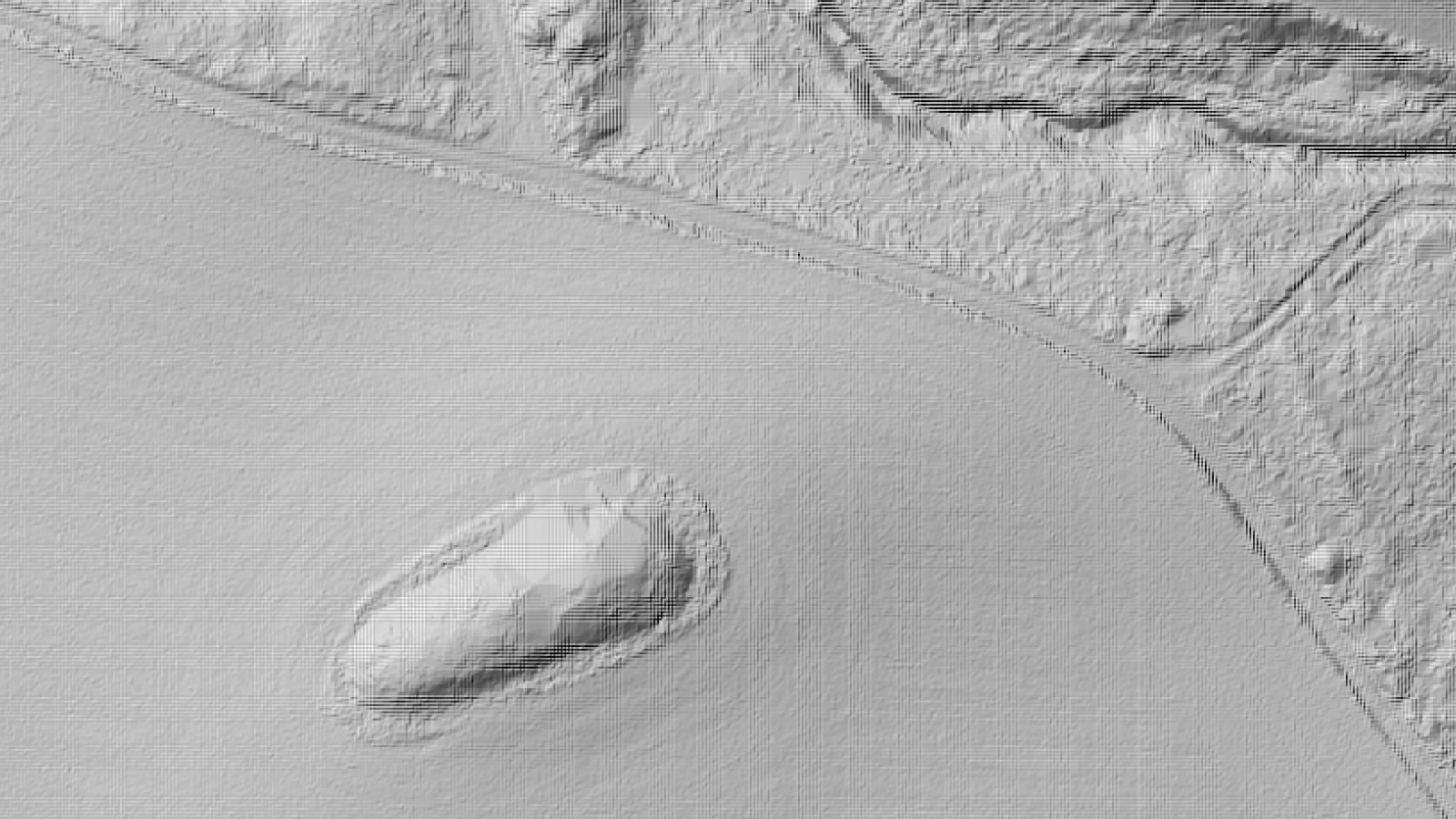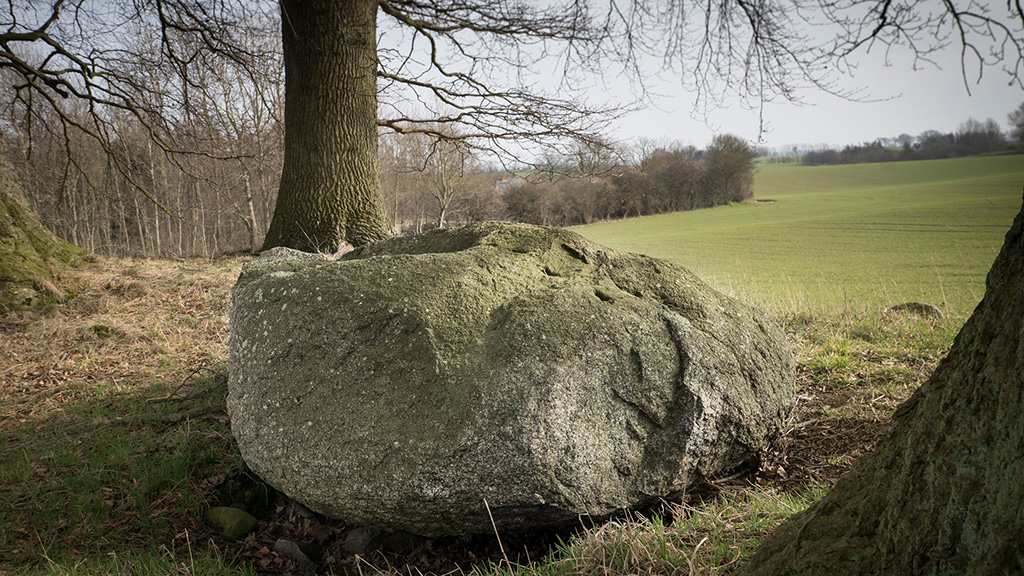
Neolithic long barrow at Løkkeby
Long dolmen is located on an mound, on the mound there are several beeches and oaks.
Løkkeby's long mound: A 5000-year-old burial monument
The long barrows are the first large burial monuments that the early farming families began to build around 3800-3200 BC. The mound here in Løkkeby is about 35 metres long and 9 metres wide. It is difficult to determine the exact size and shape of the mound as some of the kerb stones have been fallen over and the dense vegetation makes observation difficult.

On a LiDAR scan without vegetation, the typical trapezoidal shape and rounded ends stand out clearly in the landscape.
In the centre of the mound the central grave can be seen under the bushes, containing a rectangular chamber built of at least six large stones and sealed at the top with a large capstone. Massive burial chambers made of heavy timber are also known from other sites.
There are claw marks on the capstone, a clear sign that at some point the mound was intended to be used as material for other constructions. A fate that has befallen many similar large stone tombs. Today only a fraction of the original number of burial mounds remains.
Kerbstones and secrets: The untold history of the long mound
As the barrow has not been excavated, we cannot know if there are more graves than the central one, but from other similar barrows we know that there are often more burials hidden under the surface. The characteristic row of kerbstones may also be a later addition to the site, as there are many examples of long barrows without kerbstones.

Walk at the long barrow at Løkkeby
More Hidden Stories
Discover more hidden stories from Langeland at www.govisitlangeland.com/past
The project Langelands Hidden Stories is supported by the Danish Outdoor Council and developed by VisitLangeland and Langelands Museum.